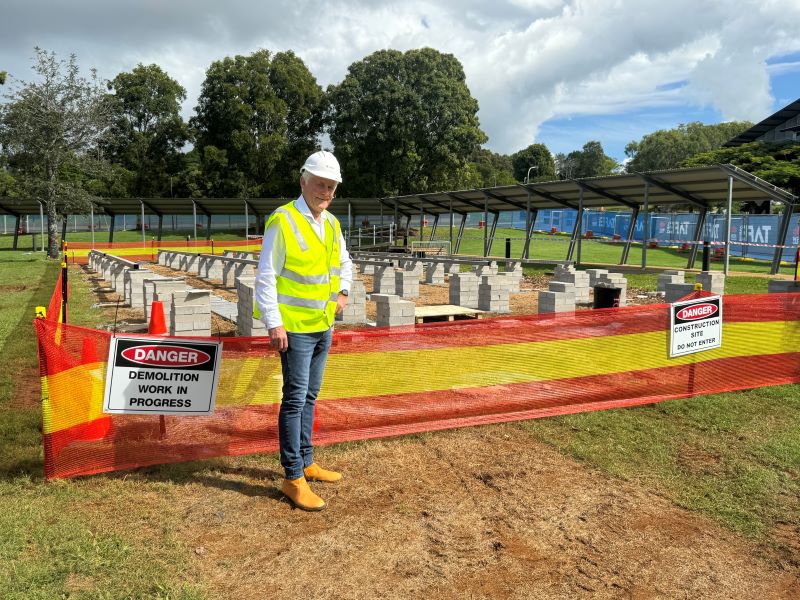- Hon James Shaw
More hospitals, universities, and other government buildings will be supported to switch to clean energy as part the Government’s plan for a carbon neutral public sector by 2025.
The Minister of Climate Change, James Shaw has allocated another $4.8 million from the Government’s $220 million State Sector Decarbonisation Fund to purchase more electric vehicles and energy efficient lighting.
The fund has now supported 86 projects right across Aotearoa – including the purchase of 1066 electric vehicles and replacement of more than 200 coal boilers.
“This Government has been putting tens of millions of dollars into supporting hospitals, schools and other public organisations switch to clean, climate-friendly ways of keeping people warm and the lights on.
“The projects I am announcing today build on this and take the overall carbon emission saving to close to half a million tonnes over the next 10 years. The projects we have supported, both large and small, will together make a significant contribution towards meeting New Zealand’s emissions budgets.
“Earlier this year, we published a plan to build a low-carbon future in a way that benefits everyone. The Emissions Reduction Plan will ensure every sector is playing its part to meet the climate targets this Government has put in place, all while creating new jobs, improving our communities, and making life better for people.
“Our commitment to a carbon neutral public sector by 2025 ensures the Government leads by example as we continue to take action to cut climate pollution and boost clean energy right across the country.
“The State Sector Decarbonisation Fund is a key part of this and sets a clear example for other sectors of the economy, demonstrating how cutting emissions can improve efficiency and services.
“Thanks to this leadership we are helping build a future where children are learning in classrooms powered by clean energy, rather than coal; where nurses and doctors can look after our loved ones in hospitals that run on climate-friendly energy; where social workers and midwives can visit people in electric vehicles, and where people can access essential local services in clean, energy-efficient buildings,” James Shaw said.
Overall, the projects supported by the State Sector Decarbonisation Fund will save 432,924 tonnes of carbon emissions over 10 years – which is the equivalent of taking 17,800 cars off the road.
ENDS
Notes to editors
Full list of projects:
- University of Waikato – $0.450 million to install efficient LED lighting at Hillcrest campus. University of Waikato will invest $1.350 million from its own budget. EECA estimates this project will reduce carbon emissions by around 1,618 tonnes over 10 years (around 161.8 tonnes per annum on average over 10 years).
- University of Waikato – $0.860 million to replace gas heaters and gas domestic hot water across the Hillcrest campus. University of Waikato will invest $1.290 million from its own budget. Estimated to reduce carbon emissions by around 4,100 tonnes over 10 years (around 410 tonnes per annum on average over 10 years).
- Education Review Office – $0.135 million to purchase electric vehicles and install charging infrastructure (5 vehicles). ERO will invest $0.135 million from its own budget. Estimated to reduce carbon emissions by around 101 tonnes over 10 years (around 10.1 tonne per annum on average over 10 years).
- Callaghan Innovation – $0.163 million to purchase electric vehicles and install charging infrastructure (5 vehicles). Callaghan Innovation will invest $0.163 million from its own budget. Estimated to reduce carbon emissions by around 61 tonnes over 10 years (around 6.1 tonnes per annum on average over 10 years).
- National Institute of Water and Atmospheric Research (NIWA) – $0.066 million to purchase electric vehicles and install charging infrastructure (2 vehicles). NIWA will invest $0.066 million from its own budget. Estimated to reduce carbon emissions by around 43 tonnes over 10 years (4.3 tonnes per annum on average over 10 years)
- Te Whatu Ora (Health NZ) Canterbury – $0.060 million for an energy efficiency water cooling project at Christchurch Hospital. Te Whatu Ora Canterbury will invest $0.090 million from its own budget. Estimated to reduce carbon emissions by around 150 tonnes over 10 years (around 15 tonnes per annum on average over 10 years).
- Te Whatu Ora (Health NZ) Canterbury – $0.789 million to purchase electric vehicles and install charging infrastructure (27 vehicles). Te Whatu Ora Canterbury will invest $0.800 million from its own budget. Estimated to reduce carbon emissions by around 1,007 tonnes over 10 years (around 100.7 tonnes per annum on average over 10 years).
- Te Whatu Ora (Health NZ) Capital Coast and Hutt Valley – $0.780 million to install efficient LED lighting at Hutt Hospital. Te Whatu Ora Hutt Valley will invest $2.339 million from its own budget. Estimated to reduce carbon emissions by around 2,080 tonnes over 10 years (around 208 tonnes per annum on average over 10 years).
- New Zealand Lotteries Commission – $0.029 million to purchase one electric vehicle. Lotto NZ will invest $0.029 million from its own budget. Estimated to reduce carbon emissions by around 10 tonnes over 10 years (around 1 tonne per annum on average over 10 years).
- Department of Internal Affairs – $0.020 million to install efficient lighting at the Avalon premises. DIA will invest $0.061 million from its own budget. Estimated to reduce carbon emissions by around 64 tonnes over 10 years (around 6.4 tonnes per annum on average over 10 years)
- Department of Internal Affairs – $1.467 million to purchase electric vehicles and install charging infrastructure (48 vehicles). DIA will invest $1.659 million from its own budget. Estimated to reduce carbon emissions by around 709 tonnes over 10 years (around 70.9 tonnes per annum on average over 10 years).







